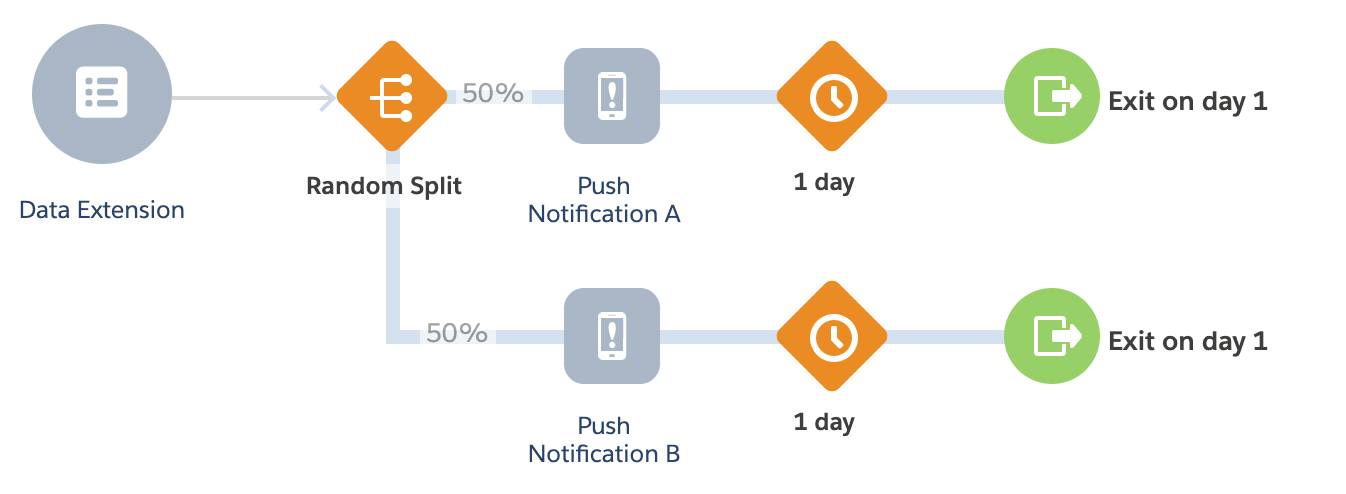Plan App Messages with MobilePush
Learning Objectives
After completing this unit, you’ll be able to:
- Create effective app messages with MobilePush.
- Follow MobilePush best practices.
If your brand has a mobile app, you may have untapped mobile marketing potential. Thanks to the power of push messages. Here’s why: Research shows that subscribers are more likely to allow push notifications from an app on their mobile device than subscribe to SMS messages. In this unit, you learn how choosing the right MobilePush message type can make your messages relevant and timely.
To be clear, you need a mobile app to use MobilePush. Then you (or an app developer) must integrate your mobile app with MobilePush using our MobilePush and Journey Builder for Apps SDK. Learn more about configuration in App Messaging with MobilePush. Don’t have an app? No worries. You can still earn this badge.
Message Types
MobilePush can send three types of messages through your mobile app.
- Push. This message is shown outside of the app as a banner or in the notification center.
- In-app. This message is shown inside of the app.
- Inbox. If you build an inbox into your app, this message is shown inside the inbox, similar to an email inbox, but for your app.
Your choice of message depends on the timeliness of the situation and the functionality of your app. For example, if you’re trying to get the word out about a flash sale, a push message is likely to get quick and immediate attention. If you want to tout new functionality in your app, combine a push with an in-app message to attract the user and then deliver more information once they’ve opened the app. Whereas, a birthday coupon that persists for the user’s entire birth month might be best suited for the app inbox. No matter which type of message you choose, though, keep these tips in mind.
Keep It Short
Push notifications allow up to 2048 bytes for iOS messages and 4096 bytes for Android messages, which can include sounds and other features. Make your message stand out from others and get to the point.
Take It to the App
You can interact with your subscriber in the app using rich messages or pages. But they have to open the app first! Set up a journey to send a push notification that encourages them to open the app. Then, delight them with an in-app message or an inbox message as the next step in the journey.
Include a Call to Action
Notifications that don’t include a clear call to action are likely to be ignored. And if you send too many ignored notifications, your engagement may drop.
Make It Simple
Subscribers have already downloaded your app and opted to receive communications from you. Make sure you respect that privilege, and don’t make it too complicated to opt out from messages. Otherwise, subscribers may completely delete your app, and you definitely don’t want that.
Send Push Messages with Journey Builder
Journey Builder is ready to send MobilePush messages. Select your message type via the Inbox, Push Notification, or In-App Message activity. Then you can either create messages right from Journey Builder or select messages you already created in MobilePush or Content Builder. Simply put, you have options.
For example, one option is a simple A/B test for push notifications. The messages contain a welcome and a prompt to log in using a URL in the message. Based on the results, you can decide which type of message gets a better response and send it to more users.

Journey Builder also helps you automatically follow up on previous messages. So, another example is an inbox message with a 10-percent-off coupon for app users. After 3 days, the journey checks the contacts who used the coupon versus those who didn’t and sends a push message before the coupon expires.

This journey accomplishes your goal without over-messaging—just a quick reminder that’s relevant to your audience. Remember to honor the privilege of the push!
In the next unit, we apply similar concepts to another key messaging channel: GroupConnect and messaging apps.